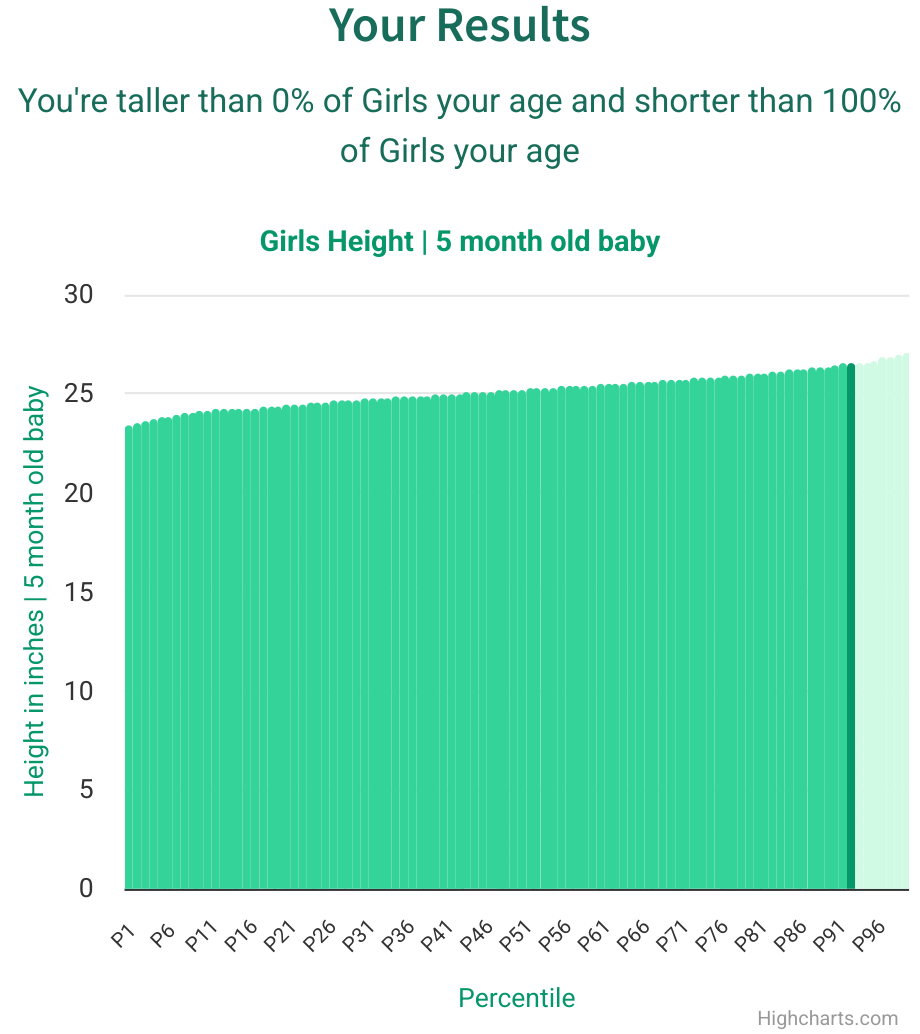Girls Weight chart in kgs for babies 5 month old baby

General Summary: 5 month old baby girls weight
In most cases, weight measurements for 5 month old baby girls will be in the range between 5 and 8 kgs. The average weight for 5 month old baby girls is 6 kgs, according to the CDC and anonymized data from users.
All Results
Enter your weight measurements above to see how they compare
So far, we have recorded [0] weight measurements for 5-month-old-baby girls on LifeMeasure!
(chart updates daily)
See more ages